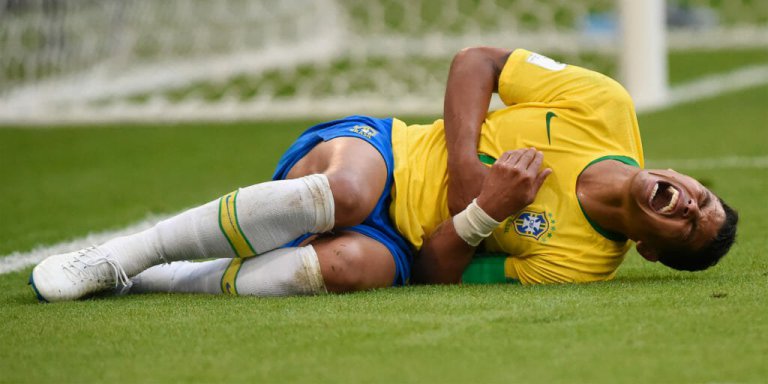7.12.18
Kicking off our series of blog posts from Group Gordon’s summer interns, Sarah Lewis examines how World Cup athletes are using their social media platforms on the world stage.
This June and July, social media platforms have been flooded with World Cup content. In just two weeks, #worldcup2018 appeared in over 1.5 million Instagram posts and generated over 25 million Twitter impressions, meaning that even those who aren’t avid soccer fans will most likely come across World Cup content on their feeds. Whether it’s a tweet condemning Neymar’s theatrics, an Instagram video of celebrations in Mexico City after the win over Germany, or a game recap posted on Facebook, social media platforms provide an outlet for viewers to share opinions about games and players, connect with other fans, and react to World Cup news.

Social media also gives the players an opportunity to interact and share their World Cup experiences directly with captivated fans. Through Instagram photos or post-game tweets, players become more accessible to the public, which can increase fan engagement with the sport and tournament. Portuguese forward Cristiano Ronaldo regularly shares tournament updates and glimpses into his life, driving around 5.1 billion interactions on social media in 2018 alone. Because the Instagram algorithm promotes posts with higher engagement, profiles of celebrity players like Ronaldo are more visible even to non-followers. This high level of visibility puts players in the spotlight on and off the field—but that can be for better or for worse.
While superstars like Ronaldo, Lionel Messi, and Sergio Ramos most likely have media training and help with social media, some of the lesser-known players on these World Cup teams may not. Those players face the challenge and pressure of reacting to—or rising above—provocations, issues, and attacks directed at them on social media during the tournament. For example, players may want to speak up and defend their actions on the field but must consider if doing so could lead to unnecessary controversy. After Swiss players Granit Xhaka and Xherdan Shaqiri celebrated their victory over Serbia with controversial hand gestures, many Serbian fans were outraged. When questioned by the media, Shaqiri said he could not discuss his gesture and tried to redirect conversation to the game and his goal. His post-match Instagram photo did not address the gesture either, and simply celebrated the Swiss victory. In this case staying silent might have been a strategic decision to let the controversy die down and the World Cup news cycle run its course.
Some players use their elevated platforms during the World Cup to draw attention to social issues. Swedish midfielder Jimmy Durmaz took to social media to make a powerful statement against racism after he was attacked on multiple social media platforms with racial slurs and threats following a foul that gave a German player a free kick and led to Germany’s goal and victory. Durmaz—who is born in Sweden and of Assyrian descent— did not respond directly to the offensive comments, instead taking the opportunity to talk about the issue of racism. He issued a YouTube video statement about the harms of racism and by posting an Instagram with a similar message. His post included a #f*ckracism hashtag that many fans on social media used in support and solidarity. Unlike Shaqiri, who did not address his hand gesture or amplify the controversy, Durmaz saw an educational opportunity in directly discussing the harmful nature of the online attacks directed at him. His social media response brought attention to an important social issue that otherwise may have been overlooked or overpowered by other World Cup news.
Social media gives athletes a much larger audience than the crowds at the Luzhniki or St. Petersburg stadiums. What it means to do the “right” thing on social media depends on the situation at hand, but it is important that World Cup players be wary of social media’s power and understand the potential consequences, risks, and benefits that may arise from it. A thoughtful approach to social media can not only prevent unwanted crises but also tap into the positive power of social media, giving players the ability to connect with fans and a platform to speak out on social issues like racism and online abuse. However, just as mistakes on the field can destroy World Cup dreams, social media blunders can turn into nightmares for unpracticed players. Athletes should consider all the risks and benefits before getting into the game.